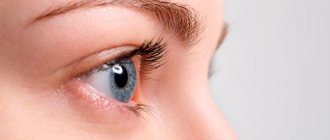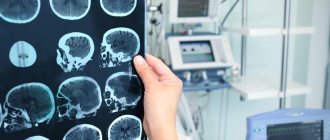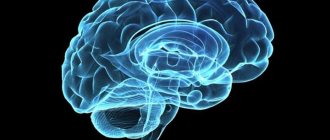Why does the disorder develop?
Somatoform disorder is a disease of a psychological nature in which the symptoms of damage to internal organs are functional, not organic.
Such dysfunction is detected in 0.5% of the world's population, and it affects mainly women. The reason lies, first of all, in the psychological state of a person.
The first group of factors influencing the occurrence of the syndrome is heredity and character traits. For example, people with asthenoneurotic and hysterical types of character are more likely to develop it. They are characterized by hypersensitivity, timid or demonstrative behavior. Such people are characterized by rapid nervous exhaustion; as a rule, they are pessimistic.
The second group is psychogenic traumatic external influences. These include acute stress factors, when a powerful psychological blow at once leads to a disorder of nervous activity. This could be the loss of a loved one, a decrease in social status, or a situation of severe fear.
Chronic stress occurs as a result of systematic mental and physical overstrain, lack of positive emotions, unmet needs and excessive demands on oneself.
It is worth noting that somatoform disorder very often develops in people who are emotionally stingy, hide their feelings, and do not know how to express them. And since emotions need a way out in any case, they find it in this unique way. A similar state can accompany members of religious families, where an atmosphere of strict morality reigns.
Other factors that provoke the disorder include complicated pregnancy, trauma, infections, and some somatic diseases.
Asthenic syndrome in the practice of a neurologist and family doctor
The problem of asthenic conditions remains relevant and very difficult in the clinical practice of any doctor. It is necessary to distinguish between the concepts of “physiological fatigue” (occurs in practically healthy people after physical or mental stress and always disappears after rest) and “asthenia” (feelings of weakness and fatigue that are not associated with any load, occur at rest, and do not disappear after rest). Definition and clinical manifestations.
Asthenia (from the Greek asthéneia - impotence, weakness) is a painful condition manifested by increased fatigue and exhaustion with extreme instability of mood, weakening of self-control, impatience, restlessness, sleep disturbance, loss of the ability for prolonged mental and physical stress, intolerance to loud sounds, bright light , pungent odors [1]. In children, the main signs of asthenic conditions are often increased fatigue and exhaustion [2]. Although patients describe asthenia as increased fatigue, the scientific definition of an asthenic state requires distinguishing it from overwork (Table 1).
In modern medical practice, two main terms are used to designate asthenic disorders: “asthenic syndrome”, traditionally found in the domestic literature, and “chronic fatigue syndrome” (Chronic Fatigue Syndrome - CFS), which has become widespread in the English-language literature in the last 20 years. The incidence of this pathology is quite high and ranges in general medical practice from 15 to 57% [3]. According to Russian studies, this is the most common symptom in outpatient practice – its frequency can reach 90% [4]. In the International Classification of Diseases of the 10th revision, conditions, the main manifestation of which is asthenic syndrome, are considered under the headings “Neurasthenia F48.0”, “Organic emotionally labile (asthenic) disorder F06.6”, “Fatigue syndrome after viral infection G93.3” " Other asthenic disorders identified in the classification include: nonspecific asthenia (R53), burnout syndrome (Z73.0), post-viral asthenia syndrome (G93.3) and psychasthenia (F48.8). As for pediatric practice, according to V.M. Studenikin, asthenic syndrome is widespread in children and occurs in such conditions as: fatigue syndrome after a viral illness (G93.3), unspecified encephalopathy (G93.4), delayed developmental stages (R62.0), reactions to severe stress and adaptation disorders (F43, F43.0–F43.2, F43.20–F43.25, F43.28, F43.8), unspecified mental retardation (F79), specific developmental disorders of speech and language (F80, F80.0 –F80.2), specific disorders of the development of learning skills (F81, F81.0–F81.3, F81.8, F81.9), specific disorders of the development of motor function (F82), mixed specific disorders of psychological (mental) development (F83 ), general disorders of psychological development (F84, F84.8, F84.9), etc. [5].
Asthenia accompanies various diseases: – endocrine and metabolic disorders (hyper- and hypothyroidism, hyperparathyroidism, Addison’s disease, treated diabetes mellitus, hyper- and hypoglycemia, severe obesity, etc.); – pulmonary and heart diseases (pneumonia, sarcoidosis, COPD, cardiovascular failure, myocarditis, endocarditis, etc.); – almost all hematological and oncological diseases; – collagenoses; – chronic renal and liver failure; – neurological diseases (multiple sclerosis, Parkinson’s disease, encephalopathy, stroke, sleep apnea syndrome, narcolepsy, etc.); – infections (HIV, hepatitis, tuberculosis, ARVI, etc.); – mental disorders (schizophrenia, depression, anorexia, alcoholism, etc.). With asthenic syndrome, patients complain of general weakness, increased fatigue (with any type of load) and decreased performance, which are combined with the following symptoms (Fig. 1): - emotional disorders (internal tension, anxiety, lability or decreased mood, irritability, etc. ); – cognitive disorders (impaired attention, absent-mindedness, memory loss, etc.); – autonomic disorders (dizziness, tachycardia, hyperthermia, hyperhidrosis, hyperventilation, dyspepsia, etc.); – pain phenomena (myalgia, tension headaches, cardialgia, abdominalgia, back pain, etc.); – motivational and metabolic-endocrine disorders (dyssomnia, decreased libido, changes in appetite, weight loss, dysmenorrhea, etc.); – hyperesthesia (increased sensitivity to light, sound and other stimuli); – sleep disorders [6].
There is no generally accepted classification of asthenia. For a practicing physician, the most convenient and useful classification is based on the causes of the development of asthenic disorders, namely: reactive, primary and secondary asthenia [7]. Reactive asthenia is a protective or compensatory reaction that develops in a practically healthy person when exposed to so-called opportunistic physical and psychophysiological factors (shift work, air travel, seasonal vitamin deficiency, exams, competitions, etc.). Reactive asthenia is provoked by any activity associated with constant tension of adaptation mechanisms: – disturbances in sleep and wakefulness in people working on a shift schedule; – frequent shifts of attention in conditions of emotional stress among simultaneous interpreters, air traffic controllers, and emergency workers; – long-term responsible work without emotional and physical stress and vacations; – reactive asthenia can accompany the recovery period after operations, injuries, various somatic diseases, stress, infections, etc. Reactive asthenia can develop in people whose profession requires increased attention or is associated with emotional stress, jet lag, or night shift work. In recent years, the number of people experiencing long-term negative effects of psychological and physical stress has increased, against the background of which a person’s adaptive capabilities are reduced or have already been exhausted. A person begins to worry about increased fatigue, weakness, exhaustion after minimal effort, which may be accompanied by complaints of muscle pain, dizziness, pressing and aching headaches, sleep disturbances, inability to relax, irritability, dyspepsia and other manifestations of gastrointestinal discomfort. In this case, there are often sensations of muscle weakness, muscle spasms, decreased endurance, attention disorder, decreased ability to concentrate, impaired memory and vigilance, lack of self-confidence, decreased libido and motivation. The majority experience emotional lability and increased anxiety. Of great importance are the initial (premorbid) personality traits, which, with asthenia, can worsen until the emergence of obsessive states of varying severity, up to neurosis. An important feature of reactive asthenia is its reversibility. It arises as a result of or in the structure of time-limited or curable pathological conditions. Reactive asthenia is always characterized by a clear connection with the provoking factor, its nonspecificity and the transient nature of asthenic disorders.
Primary or functional asthenia
is an independent disease that includes constitutional and psychogenic asthenic disorders. People with constitutional asthenia, as a rule, are distinguished by reduced body weight, high stature, elongated limbs, often have various cardiac pathologies since childhood, suffer from arterial hypotension, vestibulopathy and do not tolerate physical and emotional stress and stress. Exposure to any significant psychogenic factors can cause asthenic disorders in such people.
Secondary asthenia
is a clinical symptom, the main causes of which are various somatic and mental diseases.
It accompanies many infectious, cardiopulmonary, endocrine-metabolic, neurological, mental, hematological, oncological and other diseases. The causes of secondary asthenia can also be various iatrogenic factors, for example, taking hypnotics and antihypertensive drugs, diuretics, muscle relaxants, antidepressants, etc. In rare cases, secondary asthenia can be a consequence of prolonged exposure to various occupational hazards, such as radiation, vibration, chronic intoxication, etc. Causes asthenia.
Psychosocial, infectious-immune, metabolic and neurohormonal factors are discussed as etiological factors of asthenia, but concepts that combine all these factors into a single system prevail [8]. The feeling of tiredness and tiredness is an urge to stop activity, activity, any effort, etc. If we analyze this phenomenon in the context of two basic biological reactions: attack - flight (fight - flight) and conservation - withdrawal (conservation - withdrawal), then Asthenia can be considered as activation of the energy conservation system through failure and cessation of both physical and mental activity. Reduced activity is a universal psychophysiological mechanism for preserving the vital activity of the system in the event of any threatening situation, which operates according to the principle: less activity - less energy need. Asthenia is a general reaction of the body to any condition that threatens the depletion of energy resources. A person is a self-regulating system, therefore, not only the real depletion of energy resources, but also any threat of a decrease in energy potential will cause a decrease in overall activity, which begins long before the real loss of energy resources. The key factors in the development of asthenia in humans are changes in the sphere of motivation [9]. The mechanisms of motivation formation at the cerebral level are primarily associated with the activity of the limbic-reticular complex systems, which regulate adaptive behavior in response to any type of stress. With asthenia, first of all, changes occur in the activity of the reticular formation of the brain stem, which ensures the maintenance of the level of attention, perception, wakefulness and sleep, general and muscle activity, and autonomic regulation. Changes occur in the functioning of the hypothalamic-pituitary-adrenal system, which is a key neurohormonal system in the implementation of stress [10]. Asthenia can be regarded as a universal protective or compensatory adaptation mechanism; it works both in the case of objective disorders (for example, symptomatic asthenia) and in case of an expected or imaginary threat (psychogenic asthenia). In addition to the psychosocial concept of asthenia, infectious-immune ones (post-viral fatigue syndrome, chronic fatigue syndrome and immune dysfunction) are also discussed. As a result of numerous and detailed studies conducted over half a century, various immunological disorders in asthenia were established, mainly in the form of a decrease in the functional activity of natural and natural killer cells. It was noted that none of the known viruses is directly associated with the occurrence of asthenic syndrome, and the characteristic immunological profile of the latter has not yet been compiled [8, 11]. In children, the development of asthenia is often preceded by frequent and especially severe acute respiratory diseases, which can lead to disruption of physical and neuropsychic development, contribute to a decrease in the functional activity of the immune system and disruption of the body’s compensatory and adaptive mechanisms. Also, asthenia in children can be a consequence not only of somatic or infectious diseases, but also a manifestation of mental disorders and psychosomatic pathology. Asthenic symptoms are inextricably linked with negative emotions (depression, depression, fear) [2].
Treatment
.
Asthenia is a syndrome that requires the exclusion of any somatic or mental illness with appropriate research. If there is an underlying disease, the patient’s treatment begins with the selection of therapy for this disease. To alleviate the patient's condition, regardless of the cause of asthenia, specific anti-asthenic therapy is prescribed. The goals of therapy
are the replenishment of energy resources and their distribution at all levels of the body, including the cellular level.
Treatment of patients with asthenia is complex, including treatment of the causes of asthenia (etiopathogenetic therapy in the form of psychotherapy and specific pharmacotherapy), nonspecific restorative (vitamin-mineral complexes and preparations from medicinal plant materials) and symptomatic therapy. Thus, to prescribe adequate treatment, it is necessary to correctly diagnose (identify) asthenia. In this regard, every patient with asthenic manifestations needs mandatory medical supervision. And priority is given to behavioral therapy aimed at eliminating or minimizing etiological factors, emotional, physical or mental stress. It is important to explain to the patient the need to maintain a gentle lifestyle (streamline work, rest and sleep) and daily physical exercise with moderate intensity exercise for an hour, as well as eliminating or minimizing adverse effects. Equally important is a normal, balanced diet that provides the body with all the necessary vitamins and minerals. However, if there are clinical manifestations of vitamin and mineral deficiency, their replenishment with food becomes impossible, which requires the prescription of vitamin preparations. For the pharmacological treatment of asthenic disorders, more than 40 different drugs are currently used, including psychotropic drugs, mainly antidepressants and psychostimulants, restoratives, vitamin preparations, and drugs that improve brain metabolism [12]. Specific pharmacotherapy
for the treatment of asthenia includes the use of a number of drugs: tranquilizers, psychostimulants, antipsychotics, antidepressants, nootropics.
However, the first three groups of drugs are not recommended for long-term use (this is due to a wide range of side effects and the possibility of developing addiction and withdrawal syndrome); they are usually prescribed for 2–8 weeks. In cases of very mild asthenia, herbal preparations (for example, based on St. John's wort) can be prescribed as part of mild depression. Often in the first 2 weeks. therapy (especially with severe anxiety, panic attacks, sleep disorders) has to combine antidepressants with short courses of sedatives. The mechanism of action of nootropics is based on improving energy processes in neurons. They help eliminate clinical manifestations of asthenia, activate intellectual functions, the ability to learn, and improve memory. Neurometabolic drugs have a complex psychostimulating and nootropic effect. Their advantages are the absence of undesirable effects of psychostimulants and wider application possibilities than nootropics. Nonspecific therapy
includes adaptogens.
These are mainly preparations based on ginseng, eleutherococcus, schisandra, etc., as well as vitamin and mineral complexes, which have a dual effect on the human body: on the one hand, they help replenish nutritional deficiencies, on the other, they provide the body with increasing needs for adaptation. and increasing stress resistance. A special position among these drugs is occupied by the drug Cogitum, containing acetylaminosuccinic acid. This is a synthetic analogue of aspartic acid, corresponding to its mechanism of biological action in the body. Cogitum is a donor of racemate D and L-aspartate, and in the neuron, L-aspartate is converted into D-aspartate by the enzyme racemase. Aspartic acid (aminosuccinic acid, aspartate, aminobutanedioic acid) is an aliphatic amino acid, one of the 20 proteinogenic amino acids in the body. Aspartic acid is part of animal and plant proteins, belongs to non-essential (nonessential) amino acids and is an endogenous biospecific compound contained in the central nervous system, especially in the brain [13, 14], and, having a stimulating effect, helps to normalize nervous regulation processes. Therefore, on the one hand, the drug has a nonspecific effect at the cellular and molecular level, on the other hand, this effect is manifested in a specific antiasthenic effect, in particular through the participation of aspartic acid in the ATP synthesis cycle in the mitochondria of neurons, since it acts as an acceptor hydrogen in the ATP synthesis chain [15]. During the embryonic stage of development, there is an increase in the concentration of D-aspartic acid in the brain and retina. D-aspartic acid, being a neurotransmitter, is present in high concentrations in synaptic vesicles of axon terminals [16]. Among the free D-amino acids found in mammals, D-serine (D-Ser) and D-aspartate (D-Asp) have been the most extensively studied. Significant amounts of free D–Asp are present in a large number of mammalian tissues and cells, in particular in the central nervous, neuroendocrine and endocrine systems [17]. There are a number of studies showing that D-Asp plays an important role in the regulation of developmental processes, hormone secretion and steroidogenesis [18–20]. Some scientists believe that decreased D-Asp levels may play a role in the pathophysiology of infertility. In addition, D-Asp is a mild stimulator of NMDA (N-methyl-D-aspartate) receptors, attaching to a specific site and triggering the flow of potassium into the cell. This mechanism of activation of NMDA receptors is a milder activation of neurons and differs from the glutamate mechanism, which triggers a calcium flux, the excess of which is known to lead to glutamate excitotoxicity [21]. Recent studies have shown that D-Asp acts as a signaling molecule in the nervous and neuroendocrine systems, at least in part by binding to NMDA receptors, and plays an important role in the regulation of brain functions. The largest concentration of NMDA receptors occurs in the area of the reticular formation, which is known to be responsible for the processes of memory, mood and activity [22]. Of interest are the results of one study, which showed that the level of D-Asp in the prefrontal cortex and striatum of patients with schizophrenia (post-mortem studies) is significantly lower than in patients with other (non-mental) diseases [23]. And, as you know, asthenic syndrome in patients with schizophrenia is sometimes the leading complaint and a disabling symptom. Worldwide experience in using Cogitum is over 40 years. The drug has been listed in the PubMed database (a medical portal that is an electronic archive of the National Center for Biotechnology Information at the US National Library of Medicine) since 1966 [24]. Currently, the drug is recommended in the complex therapy of asthenic syndrome. The drug is available in the form of drinking ampoules of 10 ml, the solution has a banana flavor, which allows it to be used without dilution with water or with a small amount of liquid. The average dose of Cogitum is 3 ampoules per day: 2 in the morning and 1 at night. The average duration of treatment in children (from 7 years of age) and adults is 3 weeks. Children from 7 to 10 years old are recommended to take 1 ampoule in the morning, from 10 to 18 years old - 2 ampoules in the morning. The drug is well tolerated, does not cause convulsive activity, and allergic reactions to the components of the drug are rarely observed. Taking the drug in the morning is considered the most preferable. With an integrated and comprehensive approach to the treatment of asthenic syndrome, the treatment result will be long-term. When treating asthenic syndrome, one should not forget about dosed physical activity, which can be combined well with hydrotherapy (swimming, contrast shower), massage, physiotherapy, reflexology and phototherapy, and various types of psychotherapy.
Signs of illness
Symptoms of somatoform disorder are quite varied and manifest themselves in malfunctions of almost all body systems.
| System | Symptoms |
| Cardiovascular | Arrhythmias, sharp increases and decreases in blood pressure, pain and discomfort in the heart area. |
| Respiratory | Hyperventilation syndrome: shortness of breath, feeling of lack of air, dizziness. |
| Digestive | Irritable bowel syndrome: bloating, abdominal pain, diarrhea. Digestive disorders: poor appetite, nausea, vomiting, difficulty swallowing, feeling of a lump in the throat |
| urinary system | Frequent urination, pain when passing urine. |
| Genital area | Decreased libido, inability to achieve orgasm. Vaginismus in women; in men – weak erection, impaired ejaculation. |
| Other symptoms | Increased sweating of the palms and feet, chills, hyperthermia. |
As a rule, several symptoms associated with different systems occur simultaneously.
There are the following types of this disorder:
- hypochondriacal;
- somatized;
- somatoform dysfunction of the autonomic nervous system (SDVNS);
- chronic somatoform pain disorder;
- undifferentiated somatoform disorder.
Patients with somatoform dysfunction are distinguished by several features. This includes a peculiar, emotional or overly specific narrative about one’s condition. For example, a man comes to a cardiologist with pain and discomfort in his heart. But at the same time, he speaks not only about their character, but also about the fact that they cause him a lot of inconvenience. Such attacks occur at work, at the moment when he is supposed to make a report on his achievements. As a result, he cannot concentrate, paying all attention to his heart.
The reason here is this aspect: perhaps the man is psychologically not ready to talk about his work (for example, due to his failures), and the heart is assigned to the extreme. And it is precisely this that reacts to this stressor in order to divert attention from it.
Other distinguishing features are:
- exaggeration of pathological sensations;
- denial of the role of psychological factors in their development;
- increased irritability towards others.
Treatment of asthenovegetative syndrome
If asthenovegetative syndrome is detected in the early stages, then in this case you can do without medication treatment; it will be enough to give up heavy loads of any nature, normalize your lifestyle and diet, and sometimes just rest. In more complex cases, complex therapy is used, which includes: taking vitamins, massage and physical therapy, electrophoresis, baths with soothing essential oils. Neurometabolic drugs and herbal nootropics may also be prescribed.
In the most severe cases, medication cannot be avoided. Antidepressants (antipsychotics and antipsychotics) will help correct the patient’s condition. An individual approach is very important, taking into account age (a child and an adult have different nervous systems) and the general condition of the body. With the level of modern medicine, the development of the disease can be easily minimized.
Hypochondriacal dysfunction
Hypochondriacal disorder is characterized by a person's extreme concern about his or her health. He is sure that he is developing a severe, sometimes fatal disease. But their types may vary from case to case. One time the patient thinks that he has cancer, another time it is a severe heart pathology, etc.
The degree of sensation also changes. Either it seems to the individual that he is on the verge of death, then the manifestations become quite bearable.
It has been established that about 14% of patients visiting doctors of various specialties suffer from hypochondria. Most often it occurs in childhood and adolescence, as well as in mature people.
Basically, the patient is accompanied by the following symptoms:
- from the cardiovascular system - pain in the heart, disruptions in its functioning. The patient's conclusion is heart defects, heart attack;
- from the digestive system - abdominal pain, diarrhea, constipation. Conclusion – stomach and intestinal cancer;
- on the part of the excretory system – fear of uncontrolled urination, and therefore patients even limit leaving the house. Pain in the lower abdomen.
Important criteria for recognizing pathology are the presence of senestopathies and mood disorders.
Senestopathies are manifested by unusual and painful tactile sensations. This may be itching and burning, a feeling of cold, compression and constriction, pulsation of blood in the vessels, twisting, displacement and other similar phenomena.
Mood disorders manifest themselves in increased anxiety, sadness, melancholy, and a feeling of hopelessness. Patients focus only on themselves, and do not hear others at all. At the same time, they believe that no one needs them, everyone has abandoned them.
Such people systematically seek help from doctors. And if a specific disease is not found, they insist on re-examination.
The following nuances will help determine pathology:
- constant belief that a person has a serious illness, often with other concomitant illnesses. And even numerous normal examination results cannot convince them;
- lack of trust in doctors, despite their regular visits;
- the activity of such a patient is not aimed at alleviating the condition, but at confirming the presence of a progressive pathology;
- constant concentration on your illness;
- independent diagnosis.
As hypochondria worsens, it can develop into a paranoid state or hypochondriacal depression.
The diagnosis of hypochondriacal disorder is made when schizophrenia and schizotypal disorders, bipolar affective disorder are excluded.
Hypochondriacs are often found among famous people. Actor and director Woody Allen is one of them. One day, his illness saved him from food poisoning. The entire crew ate pizza, which only he refused due to concerns about his health. As a result, everyone except him developed an eating disorder.
Diagnosis of astheno-depressive disorders
The following methods help to find out the causes of asthenic-depressive disorder:
- Clinical and anamnestic examination is a conversation with an experienced and qualified psychotherapist who identifies symptoms and assesses what may cause the disease.
- Pathopsychological examination - performed by a medical psychologist. The specialist records deviations from the norm, which are revealed in tests of thinking, attention, and memory.
- Instrumental and laboratory research methods are indicated for differential diagnosis with organic disorders (EEG) and endogenous diseases, including schizophrenia (Neurotest, Neurophysiological test system).
- Consultations with related specialists (neurologist, sexologist, psychiatrist) - if necessary.
Somatization and chronic somatoform pain disorder
Somatized dysfunction, in addition to organ manifestations, causes a decrease in the functioning of analyzers: vision, hearing, touch, smell. Coordination of movements is impaired: patients become clumsy and have an unsteady gait. Movement disorders manifest themselves in the form of paresis and paralysis.
They describe failures in the functioning of internal organs colorfully and with charm. For example, my head hurts, as if a hoop was put on it and was gradually being squeezed. Or your stomach is swollen like a balloon.
Unlike a hypochondriac, who expresses anxiety about his health, such a patient responds more rudely and persistently. He is convinced that he is sick. And if the doctor tries to hint at the psychogenic nature of the disorder, he screams and is indignant, rejecting what was said, and demands additional examination. This patient is constantly dissatisfied and complains.
The course of the disease is chronic, with wide variability of symptoms that persist for 2 years or more.
Often, a person, due to his anxiety and aggressiveness, experiences social maladjustment and family conflicts.
A pain disorder is distinguished by the presence of severe, debilitating pain that occurs for no reason. Usually it has a clear localization - the stomach, the heart. The pain characteristics do not change, there are no other symptoms.
During somatoform dysfunction, an undifferentiated disorder is also distinguished. With it, a person suffers all the typical symptoms of the disease, but it is not possible to classify them into any known group.
Causes of astheno-neurotic syndrome
The condition is provoked by many etiological factors. Infectious or somatic pathologies cause asthenia, which for children with unstable mental health is fraught with exhaustion. The prerequisites for asthenoneurosis include too much workload of the child both at school and outside its walls. The risk of developing the syndrome increases with poor social adaptation and an unhealthy family environment. The main provocateurs of the disease are:
- disorders of intrauterine brain development due to hypoxia, bad habits of a pregnant woman;
- head injuries;
- infectious diseases, chronic kidney or liver pathologies;
- vitamin B deficiency;
- overvoltage;
- hormonal disorders;
- stress due to fear, tragic events;
- features of upbringing and temperament.
Somatoform dysfunction of the autonomic nervous system
The syndrome develops when there is a malfunction of the autonomic nervous system, which controls the functioning of internal organs, blood vessels, and is responsible for the course of physiological processes and the mobilization of the body as a whole.
The ANS consists of 2 sections: parasympathetic and sympathetic.
The sympathetic nervous system increases the heart rate, constricts blood vessels and increases blood pressure. Increases sweating and slows down intestinal motility. It relaxes the bladder, dilates the bronchi and pupil. Sympathy speeds up metabolism and activates the body as a whole.
The parasympathetic system has the opposite effect. But, despite the opposition of departments, normal well-being of a person is ensured by their coordinated work. Any malfunctions in the functioning of both systems cause various pathological sensations and syndromes, in particular, somatoform dysfunction.
There are 3 types of disorders:
- with a predominance of sympathy;
- with a predominance of parasympathetics;
- mixed.
According to the flow, stable and paroxysmal, with vascular and other types of crisis are distinguished.
Pathology can be primary, that is, it develops on its own, or secondary, after previous illnesses. Its symptoms manifest themselves under the influence of a psychotraumatic factor.
Such patients are characterized, first of all, by the appearance of vegetative signs: severe sweating, tremors of the limbs, paleness and redness of the skin.
Another group of signs expresses the dysfunction of internal organs under the control of the ANS:
- cough, shortness of breath, laryngeal spasm;
- tachycardia, arrhythmia, blood pressure changes. Heart pain does not have a clear localization and can be of various types. It happens that they are accompanied by a feeling of anxiety or fear. They are worse at rest, but go away during physical activity. Lasts from a few minutes to several days. Heart symptoms are so believable that they sometimes confuse even specialists;
- abdominal pain, bloating, difficulty swallowing; “bear disease” - diarrhea under the influence of stress;
- difficulty urinating, urinary incontinence;
- headaches, fatigue, poor sleep.
The complaints are numerous, but lack specifics. They signal a disruption in the functioning of several organs at once.
Patients are concerned about their condition, but still not to the same extent as hypochondriacs. They strive to find a way out of the situation and receive adequate treatment.
Frequently asked questions about asthenovegetative syndrome
How dangerous is asthenovegetative syndrome?
Asthenovegetative syndrome itself is not dangerous; the diseases it indicates, for example, liver dysfunction or the presence of traumatic brain injury, can be dangerous.
How long to treat asthenovegetative syndrome?
Depends on the degree of the disease - the earlier this syndrome is detected, the less time it will take to recover.
Which doctor treats asthenovegetative syndrome?
Treatment is carried out by a neurologist or psychotherapist. In the case of primary diseases, the participation of a specialist in a specific field is necessary.
SDVNS in children
Often, somatoform autonomic disorder appears in children at puberty, that is, during the period of maturation. This is due to a hormonal surge and intensive growth of the body.
The following factors can provoke the process:
- heredity;
- stress;
- mental, physical stress;
- infections;
- bad habits;
- surgical interventions;
- large body weight;
- sedentary lifestyle;
- staying at the computer for a long time.
The appearance of teenagers is typical. If sympathy predominates, then the skin of such children is moist and oily, with acne. She alternately turns red and pale. A bluish tint appears. Cold, with a marbled pattern called a vascular necklace. When pressed with a finger, the skin turns pale and red dermographism is observed.
When parasympathetics dominate, the skin is dry, with pink or white dermographism. These children have an increased appetite, but they do not gain weight.
The disorder is accompanied by a sudden rise in temperature under the influence of stress. A typical occurrence is fainting.
All characteristic changes in internal organs are present.
The psycho-emotional sphere is also undergoing changes. Such a child becomes distracted and nervous. He quickly gets tired, drowsiness and apathy appear, and his memory deteriorates.
In most cases, the course of the disease is stable. But periodically panic attacks and crises occur:
- sympatho-adrenal - accompanied by tachycardia, elevated blood pressure, headaches, thirst, chills and hyperthermia. Anxiety and feelings of fear develop;
- vagoinsular – migraine-like attacks, nausea, vomiting, pain in the abdominal area. Hyperhidrosis, decreased blood pressure and fainting, slow heart rate, increased urine output, breathing disorders;
- mixed.
The attack can last up to several hours.









